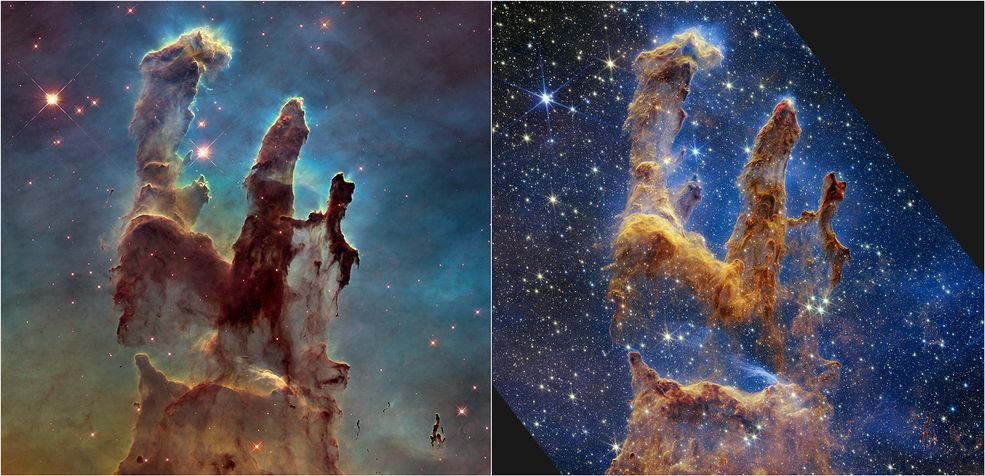Yesterday, NASA published a series of photos it received from the telescope of James Webb, showing an extraordinary nebula as well as the formation of new stars.

NASA's James Webb Space Telescope captured a series of highly detailed photographs from the iconic "Pillars of Creation", an area where new ones are formed αστέριa in dense clouds of gas and dust.
The three-dimensional "Pillars of Creation" (as NASA has dubbed them) look like majestic rock formations, but are much more permeable. These columns consist of interstellar gas and dust that are occasionally seen, translucent in the near-infrared light.
The Webb Telescope's new view of the Pillars of Creation (first made famous when imaged by NASA's Hubble Space Telescope in 1995) will help researchers to update star formation models by identifying much more precise numbers of newly formed stars, along with the amounts of gas and dust in the region.
Over time, they will begin to build a clearer understanding of how stars form. The newly formed stars in these images from the camera of Webb are the bright red spheres that usually have diffraction spikes and are located outside one of the dusty pillars.
When regions of sufficient mass form within the columns of gas and dust, they begin to collapse under their own gravity, slowly heating up and eventually forming new stars. These young stars are estimated to be only a few hundred thousand years old.
But what about those wavy lava-like lines on the ends of some of the pillars? These are ejections from stars that are still forming in the gas and dust.
Young stars periodically shoot out supersonic jets that collide with clouds of material like these thick pillars. This sometimes also leads to vibrations, which can form wavy patterns like a boat does as it moves through water.
The crimson glow seen in some photos comes from energetic hydrogen molecules resulting from jets and vibrations.





